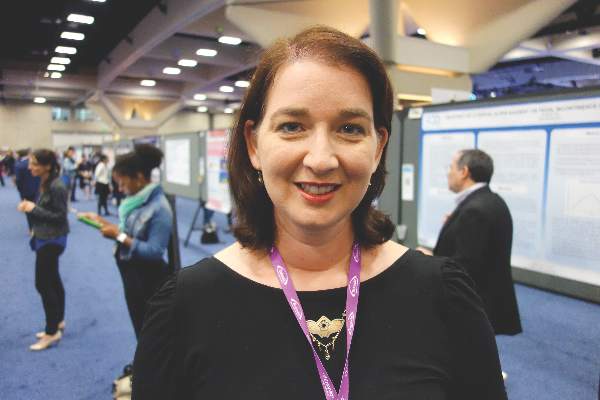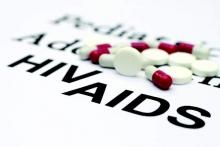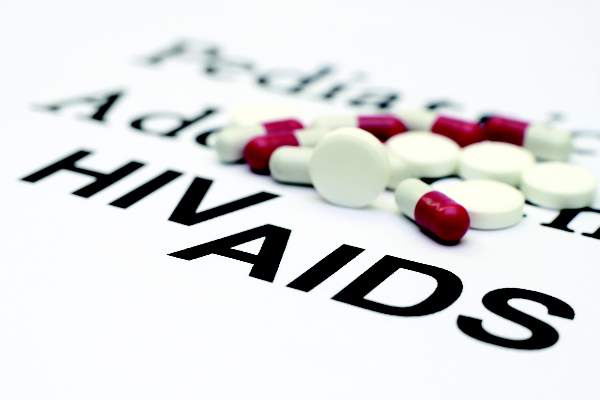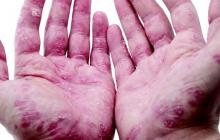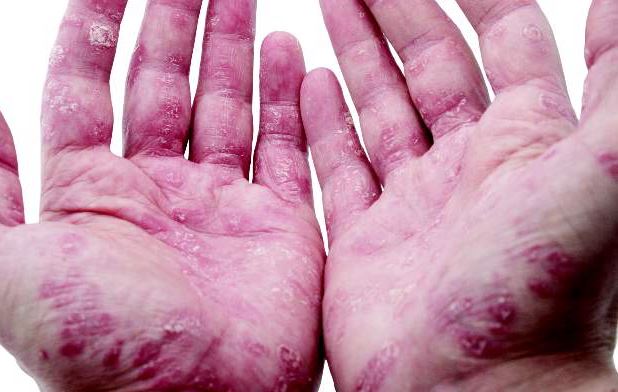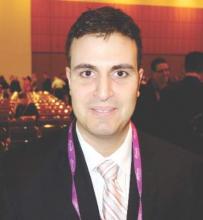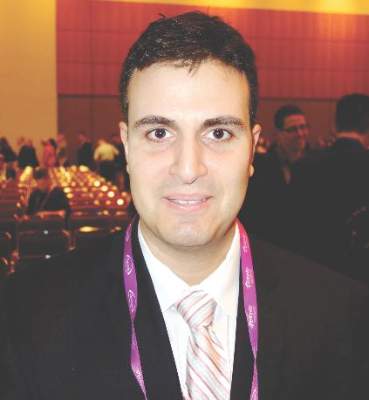User login
HCV Hub
AbbVie
acid
addicted
addiction
adolescent
adult sites
Advocacy
advocacy
agitated states
AJO, postsurgical analgesic, knee, replacement, surgery
alcohol
amphetamine
androgen
antibody
apple cider vinegar
assistance
Assistance
association
at home
attorney
audit
ayurvedic
baby
ban
baricitinib
bed bugs
best
bible
bisexual
black
bleach
blog
bulimia nervosa
buy
cannabis
certificate
certification
certified
cervical cancer, concurrent chemoradiotherapy, intravoxel incoherent motion magnetic resonance imaging, MRI, IVIM, diffusion-weighted MRI, DWI
charlie sheen
cheap
cheapest
child
childhood
childlike
children
chronic fatigue syndrome
Cladribine Tablets
cocaine
cock
combination therapies, synergistic antitumor efficacy, pertuzumab, trastuzumab, ipilimumab, nivolumab, palbociclib, letrozole, lapatinib, docetaxel, trametinib, dabrafenib, carflzomib, lenalidomide
contagious
Cortical Lesions
cream
creams
crime
criminal
cure
dangerous
dangers
dasabuvir
Dasabuvir
dead
deadly
death
dementia
dependence
dependent
depression
dermatillomania
die
diet
direct-acting antivirals
Disability
Discount
discount
dog
drink
drug abuse
drug-induced
dying
eastern medicine
eat
ect
eczema
electroconvulsive therapy
electromagnetic therapy
electrotherapy
epa
epilepsy
erectile dysfunction
explosive disorder
fake
Fake-ovir
fatal
fatalities
fatality
fibromyalgia
financial
Financial
fish oil
food
foods
foundation
free
Gabriel Pardo
gaston
general hospital
genetic
geriatric
Giancarlo Comi
gilead
Gilead
glaucoma
Glenn S. Williams
Glenn Williams
Gloria Dalla Costa
gonorrhea
Greedy
greedy
guns
hallucinations
harvoni
Harvoni
herbal
herbs
heroin
herpes
Hidradenitis Suppurativa,
holistic
home
home remedies
home remedy
homeopathic
homeopathy
hydrocortisone
ice
image
images
job
kid
kids
kill
killer
laser
lawsuit
lawyer
ledipasvir
Ledipasvir
lesbian
lesions
lights
liver
lupus
marijuana
melancholic
memory loss
menopausal
mental retardation
military
milk
moisturizers
monoamine oxidase inhibitor drugs
MRI
MS
murder
national
natural
natural cure
natural cures
natural medications
natural medicine
natural medicines
natural remedies
natural remedy
natural treatment
natural treatments
naturally
Needy
needy
Neurology Reviews
neuropathic
nightclub massacre
nightclub shooting
nude
nudity
nutraceuticals
OASIS
oasis
off label
ombitasvir
Ombitasvir
ombitasvir/paritaprevir/ritonavir with dasabuvir
orlando shooting
overactive thyroid gland
overdose
overdosed
Paolo Preziosa
paritaprevir
Paritaprevir
pediatric
pedophile
photo
photos
picture
post partum
postnatal
pregnancy
pregnant
prenatal
prepartum
prison
program
Program
Protest
protest
psychedelics
pulse nightclub
puppy
purchase
purchasing
rape
recall
recreational drug
Rehabilitation
Retinal Measurements
retrograde ejaculation
risperdal
ritonavir
Ritonavir
ritonavir with dasabuvir
robin williams
sales
sasquatch
schizophrenia
seizure
seizures
sex
sexual
sexy
shock treatment
silver
sleep disorders
smoking
sociopath
sofosbuvir
Sofosbuvir
sovaldi
ssri
store
sue
suicidal
suicide
supplements
support
Support
Support Path
teen
teenage
teenagers
Telerehabilitation
testosterone
Th17
Th17:FoxP3+Treg cell ratio
Th22
toxic
toxin
tragedy
treatment resistant
V Pak
vagina
velpatasvir
Viekira Pa
Viekira Pak
viekira pak
violence
virgin
vitamin
VPak
weight loss
withdrawal
wrinkles
xxx
young adult
young adults
zoloft
financial
sofosbuvir
ritonavir with dasabuvir
discount
support path
program
ritonavir
greedy
ledipasvir
assistance
viekira pak
vpak
advocacy
needy
protest
abbvie
paritaprevir
ombitasvir
direct-acting antivirals
dasabuvir
gilead
fake-ovir
support
v pak
oasis
harvoni
VIDEO: Nearly half of Medicaid patients denied antivirals for HCV
State Medicaid programs denied nearly half of requests to cover direct-acting antiviral drugs for patients with chronic hepatitis C virus (HCV) infection, according to a prospective study of beneficiaries in Delaware, Maryland, New Jersey, and Pennsylvania reported in the July issue of Clinical Gastroenterology and Hepatology.
In contrast, only 5% of Medicare patients and 10% of privately insured patients were denied coverage, said Dr. Vincent Lo Re III of the University of Pennsylvania, Philadelphia, together with his associates. “Notably, nearly one-quarter of Medicaid recipients with cirrhosis experienced treatment denial. Medicaid patients from these states also experienced a longer time to prescription fill than those with Medicare or commercial insurance,” the researchers said.
Their study included 2,321 HCV patients prescribed a direct-acting antiviral regimen between November 1, 2014 and April 30, 2015. All prescriptions were submitted to a specialty pharmacy that serves HCV patients in Maryland, Pennsylvania, Delaware, and New Jersey, the investigators noted. They focused on “absolute denial,” meaning that the prescription was never filled because the insurer denied coverage, regardless of appeals. “Data are lacking on the incidence of absolute denial of direct-acting antiviral prescriptions and factors associated with this outcome,” the investigators said. “These data are important because absolute denial of HCV treatment by insurers might have adverse outcomes on patients and could harm patient-provider relationships” (Clin Gastroenterol Hepatol. 2016 Apr 5. doi: 10.1016/j.cgh.2016.03.040).
Source: American Gastroenterological Association
A total of 1,023 study patients were privately insured, 795 were enrolled in Medicare, and 503 were Medicaid patients, according to the researchers. In all, 377 patients (16%) received absolute denials, most often because of “insufficient information to assess medical need” (36% of denials) and “lack of medical necessity” (35%). Medicaid patients faced an absolute denial rate of 46% – significantly higher than rates for private insurers (10.5%) or Medicare (5%; P less than .001 for both comparisons). After adjusting for potential confounders, Medicaid patients were more than four times as likely to be denied coverage for direct-acting antivirals, compared with privately insured patients (relative risk, 4.1; 95% confidence interval, 3.4-5.1). Delaware’s Medicaid program had the highest rate of absolute denial (57%), followed by Pennsylvania (48%), Maryland (47%), and New Jersey (37%).
Medicaid programs even refused to cover direct-acting antiviral prescriptions for 25% of patients who had cirrhosis, compared with absolute denial rates of only 1% for Medicare and 3% of private insurers (P less than .001 for both comparisons), according to the researchers. The implications of these denials “remain unknown,” but lack of treatment increases the risk of end-stage liver disease, hepatocellular carcinoma, extrahepatic disease, HCV transmission, and “anxiety and stress about HCV disease progression, [which can] provoke distrust among patients of the health care system and their providers,” they added. “Clinicians then are challenged to explain the denial, and important opportunities for patient engagement, education, and cure could be irrevocably lost.”
Medicaid programs also initially denied about 25% of prescriptions before eventually approving them, despite the fact that “patients had complete prior authorization requests that should have contained the materials needed to justify approval,” said the investigators. Furthermore, denial letters usually did not specify the information that was needed, “making it difficult [for clinicians] to appeal the decision.” In contrast, only about 8% of privately insured patients and 13% of Medicare enrollees were initially denied coverage.
Prescriptions as a whole were more likely to be filled in the last 3 months of the study than earlier, perhaps because insurers are starting to relax their reimbursement criteria, said the investigators. Indeed, in October 2015, the American Association for the Study of Liver Diseases and the Infectious Disease Society of America stopped triaging groups of patients for direct-acting antiviral therapy, they noted.
The research was supported by the Penn Center for AIDS Research, which is funded by the National Institutes of Health. Dr. Lo Re received investigator-initiated research support from AstraZeneca. Five coinvestigators reported relationships with a number of pharmaceutical companies. Four coinvestigators reported employment by the study site, Burman’s Specialty Pharmacy. The other four coauthors had no disclosures.
State Medicaid programs denied nearly half of requests to cover direct-acting antiviral drugs for patients with chronic hepatitis C virus (HCV) infection, according to a prospective study of beneficiaries in Delaware, Maryland, New Jersey, and Pennsylvania reported in the July issue of Clinical Gastroenterology and Hepatology.
In contrast, only 5% of Medicare patients and 10% of privately insured patients were denied coverage, said Dr. Vincent Lo Re III of the University of Pennsylvania, Philadelphia, together with his associates. “Notably, nearly one-quarter of Medicaid recipients with cirrhosis experienced treatment denial. Medicaid patients from these states also experienced a longer time to prescription fill than those with Medicare or commercial insurance,” the researchers said.
Their study included 2,321 HCV patients prescribed a direct-acting antiviral regimen between November 1, 2014 and April 30, 2015. All prescriptions were submitted to a specialty pharmacy that serves HCV patients in Maryland, Pennsylvania, Delaware, and New Jersey, the investigators noted. They focused on “absolute denial,” meaning that the prescription was never filled because the insurer denied coverage, regardless of appeals. “Data are lacking on the incidence of absolute denial of direct-acting antiviral prescriptions and factors associated with this outcome,” the investigators said. “These data are important because absolute denial of HCV treatment by insurers might have adverse outcomes on patients and could harm patient-provider relationships” (Clin Gastroenterol Hepatol. 2016 Apr 5. doi: 10.1016/j.cgh.2016.03.040).
Source: American Gastroenterological Association
A total of 1,023 study patients were privately insured, 795 were enrolled in Medicare, and 503 were Medicaid patients, according to the researchers. In all, 377 patients (16%) received absolute denials, most often because of “insufficient information to assess medical need” (36% of denials) and “lack of medical necessity” (35%). Medicaid patients faced an absolute denial rate of 46% – significantly higher than rates for private insurers (10.5%) or Medicare (5%; P less than .001 for both comparisons). After adjusting for potential confounders, Medicaid patients were more than four times as likely to be denied coverage for direct-acting antivirals, compared with privately insured patients (relative risk, 4.1; 95% confidence interval, 3.4-5.1). Delaware’s Medicaid program had the highest rate of absolute denial (57%), followed by Pennsylvania (48%), Maryland (47%), and New Jersey (37%).
Medicaid programs even refused to cover direct-acting antiviral prescriptions for 25% of patients who had cirrhosis, compared with absolute denial rates of only 1% for Medicare and 3% of private insurers (P less than .001 for both comparisons), according to the researchers. The implications of these denials “remain unknown,” but lack of treatment increases the risk of end-stage liver disease, hepatocellular carcinoma, extrahepatic disease, HCV transmission, and “anxiety and stress about HCV disease progression, [which can] provoke distrust among patients of the health care system and their providers,” they added. “Clinicians then are challenged to explain the denial, and important opportunities for patient engagement, education, and cure could be irrevocably lost.”
Medicaid programs also initially denied about 25% of prescriptions before eventually approving them, despite the fact that “patients had complete prior authorization requests that should have contained the materials needed to justify approval,” said the investigators. Furthermore, denial letters usually did not specify the information that was needed, “making it difficult [for clinicians] to appeal the decision.” In contrast, only about 8% of privately insured patients and 13% of Medicare enrollees were initially denied coverage.
Prescriptions as a whole were more likely to be filled in the last 3 months of the study than earlier, perhaps because insurers are starting to relax their reimbursement criteria, said the investigators. Indeed, in October 2015, the American Association for the Study of Liver Diseases and the Infectious Disease Society of America stopped triaging groups of patients for direct-acting antiviral therapy, they noted.
The research was supported by the Penn Center for AIDS Research, which is funded by the National Institutes of Health. Dr. Lo Re received investigator-initiated research support from AstraZeneca. Five coinvestigators reported relationships with a number of pharmaceutical companies. Four coinvestigators reported employment by the study site, Burman’s Specialty Pharmacy. The other four coauthors had no disclosures.
State Medicaid programs denied nearly half of requests to cover direct-acting antiviral drugs for patients with chronic hepatitis C virus (HCV) infection, according to a prospective study of beneficiaries in Delaware, Maryland, New Jersey, and Pennsylvania reported in the July issue of Clinical Gastroenterology and Hepatology.
In contrast, only 5% of Medicare patients and 10% of privately insured patients were denied coverage, said Dr. Vincent Lo Re III of the University of Pennsylvania, Philadelphia, together with his associates. “Notably, nearly one-quarter of Medicaid recipients with cirrhosis experienced treatment denial. Medicaid patients from these states also experienced a longer time to prescription fill than those with Medicare or commercial insurance,” the researchers said.
Their study included 2,321 HCV patients prescribed a direct-acting antiviral regimen between November 1, 2014 and April 30, 2015. All prescriptions were submitted to a specialty pharmacy that serves HCV patients in Maryland, Pennsylvania, Delaware, and New Jersey, the investigators noted. They focused on “absolute denial,” meaning that the prescription was never filled because the insurer denied coverage, regardless of appeals. “Data are lacking on the incidence of absolute denial of direct-acting antiviral prescriptions and factors associated with this outcome,” the investigators said. “These data are important because absolute denial of HCV treatment by insurers might have adverse outcomes on patients and could harm patient-provider relationships” (Clin Gastroenterol Hepatol. 2016 Apr 5. doi: 10.1016/j.cgh.2016.03.040).
Source: American Gastroenterological Association
A total of 1,023 study patients were privately insured, 795 were enrolled in Medicare, and 503 were Medicaid patients, according to the researchers. In all, 377 patients (16%) received absolute denials, most often because of “insufficient information to assess medical need” (36% of denials) and “lack of medical necessity” (35%). Medicaid patients faced an absolute denial rate of 46% – significantly higher than rates for private insurers (10.5%) or Medicare (5%; P less than .001 for both comparisons). After adjusting for potential confounders, Medicaid patients were more than four times as likely to be denied coverage for direct-acting antivirals, compared with privately insured patients (relative risk, 4.1; 95% confidence interval, 3.4-5.1). Delaware’s Medicaid program had the highest rate of absolute denial (57%), followed by Pennsylvania (48%), Maryland (47%), and New Jersey (37%).
Medicaid programs even refused to cover direct-acting antiviral prescriptions for 25% of patients who had cirrhosis, compared with absolute denial rates of only 1% for Medicare and 3% of private insurers (P less than .001 for both comparisons), according to the researchers. The implications of these denials “remain unknown,” but lack of treatment increases the risk of end-stage liver disease, hepatocellular carcinoma, extrahepatic disease, HCV transmission, and “anxiety and stress about HCV disease progression, [which can] provoke distrust among patients of the health care system and their providers,” they added. “Clinicians then are challenged to explain the denial, and important opportunities for patient engagement, education, and cure could be irrevocably lost.”
Medicaid programs also initially denied about 25% of prescriptions before eventually approving them, despite the fact that “patients had complete prior authorization requests that should have contained the materials needed to justify approval,” said the investigators. Furthermore, denial letters usually did not specify the information that was needed, “making it difficult [for clinicians] to appeal the decision.” In contrast, only about 8% of privately insured patients and 13% of Medicare enrollees were initially denied coverage.
Prescriptions as a whole were more likely to be filled in the last 3 months of the study than earlier, perhaps because insurers are starting to relax their reimbursement criteria, said the investigators. Indeed, in October 2015, the American Association for the Study of Liver Diseases and the Infectious Disease Society of America stopped triaging groups of patients for direct-acting antiviral therapy, they noted.
The research was supported by the Penn Center for AIDS Research, which is funded by the National Institutes of Health. Dr. Lo Re received investigator-initiated research support from AstraZeneca. Five coinvestigators reported relationships with a number of pharmaceutical companies. Four coinvestigators reported employment by the study site, Burman’s Specialty Pharmacy. The other four coauthors had no disclosures.
FROM CLINICAL GASTROENTEROLOGY AND HEPATOLOGY
Key clinical point: Nearly half of Medicaid patients with chronic hepatitis C infections were denied coverage for direct-acting antivirals in a prospective study.
Major finding: In all, 46% of Medicaid patients received absolute denials (46%), compared with 5% of Medicare patients and 10% of privately insured patients (P less than .001 for both comparisons).
Data source: A prospective cohort study of 2,321 patients who submitted prescriptions for direct-acting antivirals to a specialty pharmacy serving the HCV populations of Delaware, Maryland, New Jersey, and Pennsylvania.
Disclosures: The research was supported by the Penn Center for AIDS Research, which is funded by the National Institutes of Health. Dr. Lo Re received investigator-initiated research support from AstraZeneca. Five coinvestigators reported relationships with a number of pharmaceutical companies. Four coinvestigators reported employment by the study site, Burman’s Specialty Pharmacy. The other four coauthors had no disclosures.
Endorectal balloons decrease prostate radiation’s rectal and bowel sequelae
SAN DIEGO – Endorectal balloons appeared to protect against rectal complications from prostate cancer radiation in a small randomized trial from Australia.
The balloons have been around for years, but the Australian study is likely the first randomized trial of long-term clinical outcomes. The balloons are inserted and inflated during radiation treatments, which in the study were daily for 6-7 weeks. They distend the rectum, reducing radiation exposure, and also stabilize the prostate. The investigators used the RectalPro balloon from Qlrad.
The 40 men were all undergoing image-guided radiation therapy; 20 got the balloon, 20 did not. At 2 years, four balloon patients (25%) had rectal bleeding, versus 10 (50%) of the controls (P less than .001). Balloon patients also had fewer bowel symptoms, less rectal hypersensitivity, and less reduction in internal anal sphincter thickness. Three (15%), versus six controls (30%), reported declines in physical function from their preradiation baseline, and one balloon patient (5%), versus three controls (15%) reported declines in role functioning (P less than .05 for both).
Rectal pain, however, was more common with the balloon at 2 years (six patients [30%] versus two [10%], P less than .001), and balloon patients had reduced anal squeeze pressures (P less than .05). They also reported a higher prevalence of urinary symptoms.
Further follow-up is needed to determine if benefits outweigh risks; if they do, then the balloon “will become standard procedure in our hospital,” said investigator Rochelle Botten, a research scientist in the department of radiation oncology at the Royal Adelaide Hospital.
Given the study’s small numbers, it’s unclear if urinary problems – for instance, incontinence, pain, frequency – are truly associated with the balloon, but it’s “something we’ve got to look at. We are going to study” the men “again at 3 years to see if they’ve resolved, and we’ll have more patients for 2-year follow-up. If we are pressing everything towards the bladder, it [could make] sense that the bladder is getting more radiation.
“We are hoping as the numbers increase, we’ll be able to look at how much of the bladder and how much of the rectum are actually irradiated, and if there’s a difference with the balloon,” she said at the annual Digestive Disease Week meeting.
Ms. Botten had no disclosures.
SAN DIEGO – Endorectal balloons appeared to protect against rectal complications from prostate cancer radiation in a small randomized trial from Australia.
The balloons have been around for years, but the Australian study is likely the first randomized trial of long-term clinical outcomes. The balloons are inserted and inflated during radiation treatments, which in the study were daily for 6-7 weeks. They distend the rectum, reducing radiation exposure, and also stabilize the prostate. The investigators used the RectalPro balloon from Qlrad.
The 40 men were all undergoing image-guided radiation therapy; 20 got the balloon, 20 did not. At 2 years, four balloon patients (25%) had rectal bleeding, versus 10 (50%) of the controls (P less than .001). Balloon patients also had fewer bowel symptoms, less rectal hypersensitivity, and less reduction in internal anal sphincter thickness. Three (15%), versus six controls (30%), reported declines in physical function from their preradiation baseline, and one balloon patient (5%), versus three controls (15%) reported declines in role functioning (P less than .05 for both).
Rectal pain, however, was more common with the balloon at 2 years (six patients [30%] versus two [10%], P less than .001), and balloon patients had reduced anal squeeze pressures (P less than .05). They also reported a higher prevalence of urinary symptoms.
Further follow-up is needed to determine if benefits outweigh risks; if they do, then the balloon “will become standard procedure in our hospital,” said investigator Rochelle Botten, a research scientist in the department of radiation oncology at the Royal Adelaide Hospital.
Given the study’s small numbers, it’s unclear if urinary problems – for instance, incontinence, pain, frequency – are truly associated with the balloon, but it’s “something we’ve got to look at. We are going to study” the men “again at 3 years to see if they’ve resolved, and we’ll have more patients for 2-year follow-up. If we are pressing everything towards the bladder, it [could make] sense that the bladder is getting more radiation.
“We are hoping as the numbers increase, we’ll be able to look at how much of the bladder and how much of the rectum are actually irradiated, and if there’s a difference with the balloon,” she said at the annual Digestive Disease Week meeting.
Ms. Botten had no disclosures.
SAN DIEGO – Endorectal balloons appeared to protect against rectal complications from prostate cancer radiation in a small randomized trial from Australia.
The balloons have been around for years, but the Australian study is likely the first randomized trial of long-term clinical outcomes. The balloons are inserted and inflated during radiation treatments, which in the study were daily for 6-7 weeks. They distend the rectum, reducing radiation exposure, and also stabilize the prostate. The investigators used the RectalPro balloon from Qlrad.
The 40 men were all undergoing image-guided radiation therapy; 20 got the balloon, 20 did not. At 2 years, four balloon patients (25%) had rectal bleeding, versus 10 (50%) of the controls (P less than .001). Balloon patients also had fewer bowel symptoms, less rectal hypersensitivity, and less reduction in internal anal sphincter thickness. Three (15%), versus six controls (30%), reported declines in physical function from their preradiation baseline, and one balloon patient (5%), versus three controls (15%) reported declines in role functioning (P less than .05 for both).
Rectal pain, however, was more common with the balloon at 2 years (six patients [30%] versus two [10%], P less than .001), and balloon patients had reduced anal squeeze pressures (P less than .05). They also reported a higher prevalence of urinary symptoms.
Further follow-up is needed to determine if benefits outweigh risks; if they do, then the balloon “will become standard procedure in our hospital,” said investigator Rochelle Botten, a research scientist in the department of radiation oncology at the Royal Adelaide Hospital.
Given the study’s small numbers, it’s unclear if urinary problems – for instance, incontinence, pain, frequency – are truly associated with the balloon, but it’s “something we’ve got to look at. We are going to study” the men “again at 3 years to see if they’ve resolved, and we’ll have more patients for 2-year follow-up. If we are pressing everything towards the bladder, it [could make] sense that the bladder is getting more radiation.
“We are hoping as the numbers increase, we’ll be able to look at how much of the bladder and how much of the rectum are actually irradiated, and if there’s a difference with the balloon,” she said at the annual Digestive Disease Week meeting.
Ms. Botten had no disclosures.
AT DDW 2016
Key clinical point: Endorectal balloons appeared to protect against rectal complications from prostate cancer radiation in a small randomized trial from Australia.
Major finding: At 2 years, four balloon patients (25%) had rectal bleeding, versus 10 (50%) of the controls (P less than 0.001).
Data source: Randomized trial of 40 men with prostate cancer.
Disclosures: The presenter had no disclosures.
HIV research update: Early June 2016
A great volume of HIV and AIDS research enters the medical literature every month. It’s difficult to monitor everything, so here’s a quick look at some notable news items and journal articles published over the past few weeks.
Interventions that seek to promptly house homeless individuals might assist in maximizing the clinical and public health benefits of antiretroviral therapy among people living with HIV/AIDS, according to a study in AIDS Care.
MRSA colonization among HIV-infected youth is more closely related to living in a low-income or slum community than to HIV-related clinical factors, according to a study in the Pediatric Infectious Disease Journal.
Marijuana use was not associated with progression to significant liver fibrosis, in a large cohort study of HIV/hepatitis C virus (HCV) co-infected women. Alcohol use may better predict fibrosis progression in HIV/HCV co-infected women, the authors said.
More than 60% of deaths occurring in a rural South African community between 1992 and 2013 could be attributed directly or indirectly to HIV, according to a recent study. However, the authors noted that there has been an increasing level of non-HIV mortality, which has important implications for local health care provision.
A study in AIDS Care found that providers value same-day, electronic, patient-reported measures for use in clinical HIV care, with the condition that patient-reported outcomes are 1) tailored to be the most clinically relevant to their population; 2) well integrated into clinic flow; and 3) easy to interpret, highlighting chief patient concerns and changes over time.
Investigators found that nasal and salivary samples can be collected from HIV-infected patients in a standardized manner over repeated visits in both low and high resource settings, and these methods may be used in support of future HIV vaccine clinical trials.
A study in the Journal of Infectious Diseases found no intrinsic effect of viral subtype on the efficacy of tenofovir-containing regimens for treating HIV-1 subtype C infections. There were no differences between subtypes C and non-B/C in either univariate or multivariate analysis.
New research provides preliminary evidence that heavy drinking may increase a key inflammatory marker in HIV-infected individuals with suppressed infection.
The phase III Women AntiretroViral Efficacy and Safety study (WAVES) showed that clinical trials of antiretroviral regimens in global and diverse populations of treatment-naive women are possible, investigators concluded. They said their findings support guidelines recommending integrase inhibitor–based regimens in first-line antiretroviral therapy.
A hybrid mobile strategy for HIV testing of adults was leveraged successfully to reach adolescents for HIV treatment and prevention, according to a study in Kenya and Uganda.
With viral suppression induced by combination antiretroviral therapy, women have less reduction in key markers of inflammation and immune activation, compared with men, report the authors of a study in JAIDS.
The transfer of HIV-1-p17-specific T-cell receptors (TCRs) into T-cells is functional both in HIV-1–infected patients and in healthy blood donors, according to a study in the journal AIDS. The authors say TCR-transfer is a promising method to boost the immune system against HIV-1.
HIV-1 subtype C (HIV-1C) exhibits lower in vivo fitness, compared with HIV-1B, which allows successful treatment despite high baseline viral loads, a new study demonstrated. The lower fitness – and potentially lower virulence – together with high viral loads may underlie the heightened transmission potential of HIV-1C and its growing global spread.
Thailand has achieved World Health Organization targets for elimination of mother-to-child-transmission of HIV and can serve as a model for other countries, according to a report in MMWR.
Regular CD4 testing may be unnecessary for virally suppressed children aged 5-15 years with CD4 greater than or equal to 500 cells/mm3, according to a study published in the Journal of the Pediatric Infectious Diseases Society.
Investigators at Case Western Reserve University, Cleveland found that 24 weeks of 10 mg daily rosuvastatin decreases plasma coenzyme Q10 concentration and increases CoQ10/LDL ratio in HIV-infected patients on antiretroviral therapy.
Researchers from the University of California, San Francisco, and Yale University, New Haven, Conn., found that half of people newly infected with HIV experience neurologic issues that are generally not severe and usually resolve after starting antiretroviral therapy.
A study of HIV-infected individuals in metropolitan Washington identified high prevalence of transmitted drug resistance, regardless of gender. The authors said active surveillance for transmitted drug resistance is needed to guide antiretroviral usage and analyses of risk group contributions to HIV transmission and resistance.
Single-nucleotide polymorphisms in genes encoding the Toll-like receptor 4 (TLR4) and CD14 are independently associated with long-term CD4+ T-cell recovery in HIV-infected individuals after antiretroviral therapy, according to a study in the journal AIDS.
In HIV/HCV co-infected individuals, the crude incidence of hepatocellular carcinoma increased from 2001 to 2014, while other liver events declined, according to a recent study.
On Twitter @richpizzi
A great volume of HIV and AIDS research enters the medical literature every month. It’s difficult to monitor everything, so here’s a quick look at some notable news items and journal articles published over the past few weeks.
Interventions that seek to promptly house homeless individuals might assist in maximizing the clinical and public health benefits of antiretroviral therapy among people living with HIV/AIDS, according to a study in AIDS Care.
MRSA colonization among HIV-infected youth is more closely related to living in a low-income or slum community than to HIV-related clinical factors, according to a study in the Pediatric Infectious Disease Journal.
Marijuana use was not associated with progression to significant liver fibrosis, in a large cohort study of HIV/hepatitis C virus (HCV) co-infected women. Alcohol use may better predict fibrosis progression in HIV/HCV co-infected women, the authors said.
More than 60% of deaths occurring in a rural South African community between 1992 and 2013 could be attributed directly or indirectly to HIV, according to a recent study. However, the authors noted that there has been an increasing level of non-HIV mortality, which has important implications for local health care provision.
A study in AIDS Care found that providers value same-day, electronic, patient-reported measures for use in clinical HIV care, with the condition that patient-reported outcomes are 1) tailored to be the most clinically relevant to their population; 2) well integrated into clinic flow; and 3) easy to interpret, highlighting chief patient concerns and changes over time.
Investigators found that nasal and salivary samples can be collected from HIV-infected patients in a standardized manner over repeated visits in both low and high resource settings, and these methods may be used in support of future HIV vaccine clinical trials.
A study in the Journal of Infectious Diseases found no intrinsic effect of viral subtype on the efficacy of tenofovir-containing regimens for treating HIV-1 subtype C infections. There were no differences between subtypes C and non-B/C in either univariate or multivariate analysis.
New research provides preliminary evidence that heavy drinking may increase a key inflammatory marker in HIV-infected individuals with suppressed infection.
The phase III Women AntiretroViral Efficacy and Safety study (WAVES) showed that clinical trials of antiretroviral regimens in global and diverse populations of treatment-naive women are possible, investigators concluded. They said their findings support guidelines recommending integrase inhibitor–based regimens in first-line antiretroviral therapy.
A hybrid mobile strategy for HIV testing of adults was leveraged successfully to reach adolescents for HIV treatment and prevention, according to a study in Kenya and Uganda.
With viral suppression induced by combination antiretroviral therapy, women have less reduction in key markers of inflammation and immune activation, compared with men, report the authors of a study in JAIDS.
The transfer of HIV-1-p17-specific T-cell receptors (TCRs) into T-cells is functional both in HIV-1–infected patients and in healthy blood donors, according to a study in the journal AIDS. The authors say TCR-transfer is a promising method to boost the immune system against HIV-1.
HIV-1 subtype C (HIV-1C) exhibits lower in vivo fitness, compared with HIV-1B, which allows successful treatment despite high baseline viral loads, a new study demonstrated. The lower fitness – and potentially lower virulence – together with high viral loads may underlie the heightened transmission potential of HIV-1C and its growing global spread.
Thailand has achieved World Health Organization targets for elimination of mother-to-child-transmission of HIV and can serve as a model for other countries, according to a report in MMWR.
Regular CD4 testing may be unnecessary for virally suppressed children aged 5-15 years with CD4 greater than or equal to 500 cells/mm3, according to a study published in the Journal of the Pediatric Infectious Diseases Society.
Investigators at Case Western Reserve University, Cleveland found that 24 weeks of 10 mg daily rosuvastatin decreases plasma coenzyme Q10 concentration and increases CoQ10/LDL ratio in HIV-infected patients on antiretroviral therapy.
Researchers from the University of California, San Francisco, and Yale University, New Haven, Conn., found that half of people newly infected with HIV experience neurologic issues that are generally not severe and usually resolve after starting antiretroviral therapy.
A study of HIV-infected individuals in metropolitan Washington identified high prevalence of transmitted drug resistance, regardless of gender. The authors said active surveillance for transmitted drug resistance is needed to guide antiretroviral usage and analyses of risk group contributions to HIV transmission and resistance.
Single-nucleotide polymorphisms in genes encoding the Toll-like receptor 4 (TLR4) and CD14 are independently associated with long-term CD4+ T-cell recovery in HIV-infected individuals after antiretroviral therapy, according to a study in the journal AIDS.
In HIV/HCV co-infected individuals, the crude incidence of hepatocellular carcinoma increased from 2001 to 2014, while other liver events declined, according to a recent study.
On Twitter @richpizzi
A great volume of HIV and AIDS research enters the medical literature every month. It’s difficult to monitor everything, so here’s a quick look at some notable news items and journal articles published over the past few weeks.
Interventions that seek to promptly house homeless individuals might assist in maximizing the clinical and public health benefits of antiretroviral therapy among people living with HIV/AIDS, according to a study in AIDS Care.
MRSA colonization among HIV-infected youth is more closely related to living in a low-income or slum community than to HIV-related clinical factors, according to a study in the Pediatric Infectious Disease Journal.
Marijuana use was not associated with progression to significant liver fibrosis, in a large cohort study of HIV/hepatitis C virus (HCV) co-infected women. Alcohol use may better predict fibrosis progression in HIV/HCV co-infected women, the authors said.
More than 60% of deaths occurring in a rural South African community between 1992 and 2013 could be attributed directly or indirectly to HIV, according to a recent study. However, the authors noted that there has been an increasing level of non-HIV mortality, which has important implications for local health care provision.
A study in AIDS Care found that providers value same-day, electronic, patient-reported measures for use in clinical HIV care, with the condition that patient-reported outcomes are 1) tailored to be the most clinically relevant to their population; 2) well integrated into clinic flow; and 3) easy to interpret, highlighting chief patient concerns and changes over time.
Investigators found that nasal and salivary samples can be collected from HIV-infected patients in a standardized manner over repeated visits in both low and high resource settings, and these methods may be used in support of future HIV vaccine clinical trials.
A study in the Journal of Infectious Diseases found no intrinsic effect of viral subtype on the efficacy of tenofovir-containing regimens for treating HIV-1 subtype C infections. There were no differences between subtypes C and non-B/C in either univariate or multivariate analysis.
New research provides preliminary evidence that heavy drinking may increase a key inflammatory marker in HIV-infected individuals with suppressed infection.
The phase III Women AntiretroViral Efficacy and Safety study (WAVES) showed that clinical trials of antiretroviral regimens in global and diverse populations of treatment-naive women are possible, investigators concluded. They said their findings support guidelines recommending integrase inhibitor–based regimens in first-line antiretroviral therapy.
A hybrid mobile strategy for HIV testing of adults was leveraged successfully to reach adolescents for HIV treatment and prevention, according to a study in Kenya and Uganda.
With viral suppression induced by combination antiretroviral therapy, women have less reduction in key markers of inflammation and immune activation, compared with men, report the authors of a study in JAIDS.
The transfer of HIV-1-p17-specific T-cell receptors (TCRs) into T-cells is functional both in HIV-1–infected patients and in healthy blood donors, according to a study in the journal AIDS. The authors say TCR-transfer is a promising method to boost the immune system against HIV-1.
HIV-1 subtype C (HIV-1C) exhibits lower in vivo fitness, compared with HIV-1B, which allows successful treatment despite high baseline viral loads, a new study demonstrated. The lower fitness – and potentially lower virulence – together with high viral loads may underlie the heightened transmission potential of HIV-1C and its growing global spread.
Thailand has achieved World Health Organization targets for elimination of mother-to-child-transmission of HIV and can serve as a model for other countries, according to a report in MMWR.
Regular CD4 testing may be unnecessary for virally suppressed children aged 5-15 years with CD4 greater than or equal to 500 cells/mm3, according to a study published in the Journal of the Pediatric Infectious Diseases Society.
Investigators at Case Western Reserve University, Cleveland found that 24 weeks of 10 mg daily rosuvastatin decreases plasma coenzyme Q10 concentration and increases CoQ10/LDL ratio in HIV-infected patients on antiretroviral therapy.
Researchers from the University of California, San Francisco, and Yale University, New Haven, Conn., found that half of people newly infected with HIV experience neurologic issues that are generally not severe and usually resolve after starting antiretroviral therapy.
A study of HIV-infected individuals in metropolitan Washington identified high prevalence of transmitted drug resistance, regardless of gender. The authors said active surveillance for transmitted drug resistance is needed to guide antiretroviral usage and analyses of risk group contributions to HIV transmission and resistance.
Single-nucleotide polymorphisms in genes encoding the Toll-like receptor 4 (TLR4) and CD14 are independently associated with long-term CD4+ T-cell recovery in HIV-infected individuals after antiretroviral therapy, according to a study in the journal AIDS.
In HIV/HCV co-infected individuals, the crude incidence of hepatocellular carcinoma increased from 2001 to 2014, while other liver events declined, according to a recent study.
On Twitter @richpizzi
Study identifies changing trends in PBC incidence, mortality
A new study has identified a higher mortality rate among males with primary biliary cholangitis (PBC) and a lower sex ratio in disease prevalence than previously thought, according to findings published online in the journal Scientific Reports.
Investigators analyzed inpatient data from 2000 to 2009 for PBC patients in Denmark and in the Italian province of Lombardia. In the Lombardia cohort, 2,970 PBC patients were identified, with a female to male ratio of 2.3:1. In the Denmark population, 722 cases were identified, with a female to male ratio of 4.2:1, reported Dr. Ana Lleo from the Humanitas Clinical and Research Center in Rozzano, Italy, and her coauthors.
Among the Lombardia patients, survival at 1, 5, and 10 years was significantly higher for females (89%, 95% confidence interval, 88%-91%; 77%, 95% CI, 75%-78%; and 67%, 95% CI, 65%-70%, respectively) than for males (78%, 95% CI, 75%-80%; 55%, 95% CI, 52%-59%; and 47%, 95% CI, 43%-51%, respectively). Findings were similar in the Denmark cohort, with female patients having higher survival rates (survival at 1, 5, and 10 years of 90%, 87%-92%; 73%, 95% CI, 69%-77%; and 60%, 95% CI, 53%-67%, respectively) than males (72%, 95% CI, 63%-79%; 42%, 95% CI, 32%-51%; and 27%, 95% CI, 14%-43%, respectively), the authors reported.
The study findings question long-held beliefs on PBC, the authors said. Hepatologists should be aware that “male PBC patients have higher mortality than [do] their female counterparts, such that close clinical follow-up and checking adherence to therapy are strongly recommended,” Dr. Lleu and colleagues concluded.
Read the full article in Scientific Reports: http://www.ncbi.nlm.nih.gov/pmc/articles/PMC4872151.
A new study has identified a higher mortality rate among males with primary biliary cholangitis (PBC) and a lower sex ratio in disease prevalence than previously thought, according to findings published online in the journal Scientific Reports.
Investigators analyzed inpatient data from 2000 to 2009 for PBC patients in Denmark and in the Italian province of Lombardia. In the Lombardia cohort, 2,970 PBC patients were identified, with a female to male ratio of 2.3:1. In the Denmark population, 722 cases were identified, with a female to male ratio of 4.2:1, reported Dr. Ana Lleo from the Humanitas Clinical and Research Center in Rozzano, Italy, and her coauthors.
Among the Lombardia patients, survival at 1, 5, and 10 years was significantly higher for females (89%, 95% confidence interval, 88%-91%; 77%, 95% CI, 75%-78%; and 67%, 95% CI, 65%-70%, respectively) than for males (78%, 95% CI, 75%-80%; 55%, 95% CI, 52%-59%; and 47%, 95% CI, 43%-51%, respectively). Findings were similar in the Denmark cohort, with female patients having higher survival rates (survival at 1, 5, and 10 years of 90%, 87%-92%; 73%, 95% CI, 69%-77%; and 60%, 95% CI, 53%-67%, respectively) than males (72%, 95% CI, 63%-79%; 42%, 95% CI, 32%-51%; and 27%, 95% CI, 14%-43%, respectively), the authors reported.
The study findings question long-held beliefs on PBC, the authors said. Hepatologists should be aware that “male PBC patients have higher mortality than [do] their female counterparts, such that close clinical follow-up and checking adherence to therapy are strongly recommended,” Dr. Lleu and colleagues concluded.
Read the full article in Scientific Reports: http://www.ncbi.nlm.nih.gov/pmc/articles/PMC4872151.
A new study has identified a higher mortality rate among males with primary biliary cholangitis (PBC) and a lower sex ratio in disease prevalence than previously thought, according to findings published online in the journal Scientific Reports.
Investigators analyzed inpatient data from 2000 to 2009 for PBC patients in Denmark and in the Italian province of Lombardia. In the Lombardia cohort, 2,970 PBC patients were identified, with a female to male ratio of 2.3:1. In the Denmark population, 722 cases were identified, with a female to male ratio of 4.2:1, reported Dr. Ana Lleo from the Humanitas Clinical and Research Center in Rozzano, Italy, and her coauthors.
Among the Lombardia patients, survival at 1, 5, and 10 years was significantly higher for females (89%, 95% confidence interval, 88%-91%; 77%, 95% CI, 75%-78%; and 67%, 95% CI, 65%-70%, respectively) than for males (78%, 95% CI, 75%-80%; 55%, 95% CI, 52%-59%; and 47%, 95% CI, 43%-51%, respectively). Findings were similar in the Denmark cohort, with female patients having higher survival rates (survival at 1, 5, and 10 years of 90%, 87%-92%; 73%, 95% CI, 69%-77%; and 60%, 95% CI, 53%-67%, respectively) than males (72%, 95% CI, 63%-79%; 42%, 95% CI, 32%-51%; and 27%, 95% CI, 14%-43%, respectively), the authors reported.
The study findings question long-held beliefs on PBC, the authors said. Hepatologists should be aware that “male PBC patients have higher mortality than [do] their female counterparts, such that close clinical follow-up and checking adherence to therapy are strongly recommended,” Dr. Lleu and colleagues concluded.
Read the full article in Scientific Reports: http://www.ncbi.nlm.nih.gov/pmc/articles/PMC4872151.
FROM SCIENTIFIC REPORTS
New HCV test approach could cut costs, streamline diagnosis
Substituting a less-expensive hepatitis C core antigen test into the standard two-step process for diagnosing active hepatitis C virus (HCV) infection could streamline and cut the cost of HCV detection.
The standard two-step approach – detection of HCV antibodies followed by nucleic acid testing (NAT) as a marker for HCV viremia – may be improved by replacing NAT with the HCV core antigen (HCVcAg) test, according to the results of a study published in Annals of Internal Medicine.
Dr. J. Morgan Freiman, of the Boston Medical Center, and her colleagues conducted a systematic literature review to identify 44 case-control, cross-sectional, cohort, or randomized trials that compared any of five HCVcAg screening tests with a NAT reference standard.
The investigators performed a meta-analysis to assess the sensitivity (proportion of samples with a positive NAT and HCVcAg) and specificity (proportion of samples with a negative NAT and HCVcAg) associated with the five HCVcAg tests, as well as how they correlated with NAT-derived HCV RNA levels greater than 3,000 IU/mL.
The two best-performing HCVcAg tests of the five assessed were the Abbott ARCHITECT HCV Ag and the Ortho HCV Ag ELISA, based on their sensitivity (93.4%and 93.2%, respectively), specificity (98.8% and 99.2%, respectively), and positive (80.6 and 116.5, respectively) and negative (0.06 and 0.06, respectively) likelihood ratios.
Although limited data were available, the results of three quantitative studies showed that Abbott ARCHITECT HCVcAg was well correlated with HCV RNA levels greater than 3,000 IU/mL.
“This systematic review concludes that a well-performing HCVcAg test can achieve similar diagnostic accuracy to NAT for identification of active HCV infection when the viral load exceeds 3,000 IU/mL,” Dr. Freiman and her colleagues noted.
HCVcAg testing should be researched further as a potentially viable and less-expensive alternative to NAT, the investigators said, with the goal of simplifying detection at the point of care and increasing the rate of patient diagnosis (Ann Intern Med. 2016 Jun 21; doi: 10.7326/M16-0065).
The National Institutes of Health funded the study. Dr. White disclosed grant support from the funding source. Dr. Ongarello and Dr. Denkinger reported relationships with the Foundation for Innovative New Diagnostics. No additional authors reported conflicts of interest.
Substituting a less-expensive hepatitis C core antigen test into the standard two-step process for diagnosing active hepatitis C virus (HCV) infection could streamline and cut the cost of HCV detection.
The standard two-step approach – detection of HCV antibodies followed by nucleic acid testing (NAT) as a marker for HCV viremia – may be improved by replacing NAT with the HCV core antigen (HCVcAg) test, according to the results of a study published in Annals of Internal Medicine.
Dr. J. Morgan Freiman, of the Boston Medical Center, and her colleagues conducted a systematic literature review to identify 44 case-control, cross-sectional, cohort, or randomized trials that compared any of five HCVcAg screening tests with a NAT reference standard.
The investigators performed a meta-analysis to assess the sensitivity (proportion of samples with a positive NAT and HCVcAg) and specificity (proportion of samples with a negative NAT and HCVcAg) associated with the five HCVcAg tests, as well as how they correlated with NAT-derived HCV RNA levels greater than 3,000 IU/mL.
The two best-performing HCVcAg tests of the five assessed were the Abbott ARCHITECT HCV Ag and the Ortho HCV Ag ELISA, based on their sensitivity (93.4%and 93.2%, respectively), specificity (98.8% and 99.2%, respectively), and positive (80.6 and 116.5, respectively) and negative (0.06 and 0.06, respectively) likelihood ratios.
Although limited data were available, the results of three quantitative studies showed that Abbott ARCHITECT HCVcAg was well correlated with HCV RNA levels greater than 3,000 IU/mL.
“This systematic review concludes that a well-performing HCVcAg test can achieve similar diagnostic accuracy to NAT for identification of active HCV infection when the viral load exceeds 3,000 IU/mL,” Dr. Freiman and her colleagues noted.
HCVcAg testing should be researched further as a potentially viable and less-expensive alternative to NAT, the investigators said, with the goal of simplifying detection at the point of care and increasing the rate of patient diagnosis (Ann Intern Med. 2016 Jun 21; doi: 10.7326/M16-0065).
The National Institutes of Health funded the study. Dr. White disclosed grant support from the funding source. Dr. Ongarello and Dr. Denkinger reported relationships with the Foundation for Innovative New Diagnostics. No additional authors reported conflicts of interest.
Substituting a less-expensive hepatitis C core antigen test into the standard two-step process for diagnosing active hepatitis C virus (HCV) infection could streamline and cut the cost of HCV detection.
The standard two-step approach – detection of HCV antibodies followed by nucleic acid testing (NAT) as a marker for HCV viremia – may be improved by replacing NAT with the HCV core antigen (HCVcAg) test, according to the results of a study published in Annals of Internal Medicine.
Dr. J. Morgan Freiman, of the Boston Medical Center, and her colleagues conducted a systematic literature review to identify 44 case-control, cross-sectional, cohort, or randomized trials that compared any of five HCVcAg screening tests with a NAT reference standard.
The investigators performed a meta-analysis to assess the sensitivity (proportion of samples with a positive NAT and HCVcAg) and specificity (proportion of samples with a negative NAT and HCVcAg) associated with the five HCVcAg tests, as well as how they correlated with NAT-derived HCV RNA levels greater than 3,000 IU/mL.
The two best-performing HCVcAg tests of the five assessed were the Abbott ARCHITECT HCV Ag and the Ortho HCV Ag ELISA, based on their sensitivity (93.4%and 93.2%, respectively), specificity (98.8% and 99.2%, respectively), and positive (80.6 and 116.5, respectively) and negative (0.06 and 0.06, respectively) likelihood ratios.
Although limited data were available, the results of three quantitative studies showed that Abbott ARCHITECT HCVcAg was well correlated with HCV RNA levels greater than 3,000 IU/mL.
“This systematic review concludes that a well-performing HCVcAg test can achieve similar diagnostic accuracy to NAT for identification of active HCV infection when the viral load exceeds 3,000 IU/mL,” Dr. Freiman and her colleagues noted.
HCVcAg testing should be researched further as a potentially viable and less-expensive alternative to NAT, the investigators said, with the goal of simplifying detection at the point of care and increasing the rate of patient diagnosis (Ann Intern Med. 2016 Jun 21; doi: 10.7326/M16-0065).
The National Institutes of Health funded the study. Dr. White disclosed grant support from the funding source. Dr. Ongarello and Dr. Denkinger reported relationships with the Foundation for Innovative New Diagnostics. No additional authors reported conflicts of interest.
FROM ANNALS OF INTERNAL MEDICINE
Key clinical point: The diagnostic rate of chronic hepatitis C virus may be increased by point of care hepatitis C virus core antigen assessment.
Major finding: For patients with chronic HCV infection and viral loads exceeding 3,000 IU/mL, an HCVcAg screen performed as well as nucleic acid testing.
Data sources: Case-control, cross-sectional, cohort, or randomized trials that compared any of five HCVcAg tests with a NAT reference standard.
Disclosures: The National Institutes of Health funded the study. Dr. White disclosed grant support from the funding source. Dr. Ongarello and Dr. Denkinger reported relationships with the Foundation for Innovative New Diagnostics. No additional authors reported conflicts of interest.
Tips for collaborations among GI investigators, industry, FDA
SAN DIEGO – Tensions among academic investigators, industry sponsors, and the Food and Drug Administration can hinder new drug approvals and slow or block communication of important results, experts said at the annual Digestive Disease Week.
Relationships between investigators and industry have become especially strained, according to Dr. M. Scott Harris, cofounder of Lyric Pharmaceuticals in San Francisco. “I can tell you as a former investigator, and someone who speaks to investigators all the time, they feel disenfranchised,” he said.
Several steps can help. Industry should focus on empowering investigators, “not study sites,” said Dr. Harris. “Have protocol development meetings, not investigator meetings. Have open dialogue so that investigators can share in the excitement of the study, the results, and the science.”
Intellectual property is a particularly hot topic, acknowledged Dr. Harris, who started out in academic gastroenterology before making the jump to working for pharmaceutical and biotechnology companies. “Intellectual property is the lifeblood of a company – the only thing that generates the likelihood of a return on investment,” he emphasized. “Please do not push back if some information cannot be shared with you.” But within those constraints, industry should “force itself to be as patient as possible,” he said. “A balance has to be struck between the need for IP [intellectual property] and the need to share knowledge.”
Sharing knowledge also means that industry sponsors need to commit to a clear publication strategy, said Dr. Harris. “Investigators want the results of the studies to be communicated, including reasons for failure. We have failed at this as an industry, and this is not acceptable.”
But academic investigators need to make some changes, too. Successfully joining a trial means engaging actively with the sponsor and protocol, Dr. Harris emphasized. “Don’t tell your staff you’re too busy to talk to me when I call. Focus on ethical study conduct, good clinical practice, training, data quality, and meeting timelines.”
Dr. Gary Lichtenstein agreed. A gastroenterologist at the University of Pennsylvania, Philadelphia, with more than 30 years of experience in clinical trials, he knows that successful academic study sites have “efficient and businesslike operations,” a proven internal audit system, and solid, reasonable budgeting for staff time, overhead, equipment, and storage. In particular, academic investigators should double-check training requirements, the qualifications of the study coordinator, and who will handle regulatory, legal, and budgeting concerns, he said.
Vetting a potential industry sponsor is just as important. Ask “if they have the staff, time, equipment, and space to do the study,” Dr. Lichtenstein stressed. “Communicate expectations in writing back and forth to avoid misunderstandings. An indemnification clause is also very important to hold the consultant harmless from and against any claim, loss, or damage whatsoever.”
The FDA, for its part, needs to respond faster to meeting requests and offer clearer guidance about appropriate study designs and outcome measures, both experts emphasized. The median time for FDA to approve a drug application is about 180 days, while approving new gastroenterology agents takes nearly twice as long, according to Dr. Lichtenstein. “There is clearly a discrepancy, and it would be nice if we moved the bar closer. As an investigator, I need to know which trials are acceptable in design, and what endpoints are clearly defined, with examples,” he said. “If I have a question, I need a point of contact to call to get an answer in rapid time, instead of having to wait for months, and I need to know which biomarkers are appropriate to use.”
Dr. Harris agreed. “There should be tension between FDA and industry – that is part of the process,” he said. “But open communication and rapid response to meeting requests are crucial.”
Timeliness and transparency are especially important as FDA transitions “from being a classic regulator to a proactive partner in drug development,” Dr. Harris said. “What industry needs and expects from FDA is greater certainty on the path. Companies may or may not like a particular FDA guidance document, but they greatly appreciate the clarity that guidance documents provide.”
Dr. Lichtenstein disclosed ties to AbbVie, Hospira, Pfizer, and numerous other pharmaceutical companies. Dr. Harris is employed by Lyric Pharmaceuticals and disclosed relationships with several other biopharmaceutical companies.
SAN DIEGO – Tensions among academic investigators, industry sponsors, and the Food and Drug Administration can hinder new drug approvals and slow or block communication of important results, experts said at the annual Digestive Disease Week.
Relationships between investigators and industry have become especially strained, according to Dr. M. Scott Harris, cofounder of Lyric Pharmaceuticals in San Francisco. “I can tell you as a former investigator, and someone who speaks to investigators all the time, they feel disenfranchised,” he said.
Several steps can help. Industry should focus on empowering investigators, “not study sites,” said Dr. Harris. “Have protocol development meetings, not investigator meetings. Have open dialogue so that investigators can share in the excitement of the study, the results, and the science.”
Intellectual property is a particularly hot topic, acknowledged Dr. Harris, who started out in academic gastroenterology before making the jump to working for pharmaceutical and biotechnology companies. “Intellectual property is the lifeblood of a company – the only thing that generates the likelihood of a return on investment,” he emphasized. “Please do not push back if some information cannot be shared with you.” But within those constraints, industry should “force itself to be as patient as possible,” he said. “A balance has to be struck between the need for IP [intellectual property] and the need to share knowledge.”
Sharing knowledge also means that industry sponsors need to commit to a clear publication strategy, said Dr. Harris. “Investigators want the results of the studies to be communicated, including reasons for failure. We have failed at this as an industry, and this is not acceptable.”
But academic investigators need to make some changes, too. Successfully joining a trial means engaging actively with the sponsor and protocol, Dr. Harris emphasized. “Don’t tell your staff you’re too busy to talk to me when I call. Focus on ethical study conduct, good clinical practice, training, data quality, and meeting timelines.”
Dr. Gary Lichtenstein agreed. A gastroenterologist at the University of Pennsylvania, Philadelphia, with more than 30 years of experience in clinical trials, he knows that successful academic study sites have “efficient and businesslike operations,” a proven internal audit system, and solid, reasonable budgeting for staff time, overhead, equipment, and storage. In particular, academic investigators should double-check training requirements, the qualifications of the study coordinator, and who will handle regulatory, legal, and budgeting concerns, he said.
Vetting a potential industry sponsor is just as important. Ask “if they have the staff, time, equipment, and space to do the study,” Dr. Lichtenstein stressed. “Communicate expectations in writing back and forth to avoid misunderstandings. An indemnification clause is also very important to hold the consultant harmless from and against any claim, loss, or damage whatsoever.”
The FDA, for its part, needs to respond faster to meeting requests and offer clearer guidance about appropriate study designs and outcome measures, both experts emphasized. The median time for FDA to approve a drug application is about 180 days, while approving new gastroenterology agents takes nearly twice as long, according to Dr. Lichtenstein. “There is clearly a discrepancy, and it would be nice if we moved the bar closer. As an investigator, I need to know which trials are acceptable in design, and what endpoints are clearly defined, with examples,” he said. “If I have a question, I need a point of contact to call to get an answer in rapid time, instead of having to wait for months, and I need to know which biomarkers are appropriate to use.”
Dr. Harris agreed. “There should be tension between FDA and industry – that is part of the process,” he said. “But open communication and rapid response to meeting requests are crucial.”
Timeliness and transparency are especially important as FDA transitions “from being a classic regulator to a proactive partner in drug development,” Dr. Harris said. “What industry needs and expects from FDA is greater certainty on the path. Companies may or may not like a particular FDA guidance document, but they greatly appreciate the clarity that guidance documents provide.”
Dr. Lichtenstein disclosed ties to AbbVie, Hospira, Pfizer, and numerous other pharmaceutical companies. Dr. Harris is employed by Lyric Pharmaceuticals and disclosed relationships with several other biopharmaceutical companies.
SAN DIEGO – Tensions among academic investigators, industry sponsors, and the Food and Drug Administration can hinder new drug approvals and slow or block communication of important results, experts said at the annual Digestive Disease Week.
Relationships between investigators and industry have become especially strained, according to Dr. M. Scott Harris, cofounder of Lyric Pharmaceuticals in San Francisco. “I can tell you as a former investigator, and someone who speaks to investigators all the time, they feel disenfranchised,” he said.
Several steps can help. Industry should focus on empowering investigators, “not study sites,” said Dr. Harris. “Have protocol development meetings, not investigator meetings. Have open dialogue so that investigators can share in the excitement of the study, the results, and the science.”
Intellectual property is a particularly hot topic, acknowledged Dr. Harris, who started out in academic gastroenterology before making the jump to working for pharmaceutical and biotechnology companies. “Intellectual property is the lifeblood of a company – the only thing that generates the likelihood of a return on investment,” he emphasized. “Please do not push back if some information cannot be shared with you.” But within those constraints, industry should “force itself to be as patient as possible,” he said. “A balance has to be struck between the need for IP [intellectual property] and the need to share knowledge.”
Sharing knowledge also means that industry sponsors need to commit to a clear publication strategy, said Dr. Harris. “Investigators want the results of the studies to be communicated, including reasons for failure. We have failed at this as an industry, and this is not acceptable.”
But academic investigators need to make some changes, too. Successfully joining a trial means engaging actively with the sponsor and protocol, Dr. Harris emphasized. “Don’t tell your staff you’re too busy to talk to me when I call. Focus on ethical study conduct, good clinical practice, training, data quality, and meeting timelines.”
Dr. Gary Lichtenstein agreed. A gastroenterologist at the University of Pennsylvania, Philadelphia, with more than 30 years of experience in clinical trials, he knows that successful academic study sites have “efficient and businesslike operations,” a proven internal audit system, and solid, reasonable budgeting for staff time, overhead, equipment, and storage. In particular, academic investigators should double-check training requirements, the qualifications of the study coordinator, and who will handle regulatory, legal, and budgeting concerns, he said.
Vetting a potential industry sponsor is just as important. Ask “if they have the staff, time, equipment, and space to do the study,” Dr. Lichtenstein stressed. “Communicate expectations in writing back and forth to avoid misunderstandings. An indemnification clause is also very important to hold the consultant harmless from and against any claim, loss, or damage whatsoever.”
The FDA, for its part, needs to respond faster to meeting requests and offer clearer guidance about appropriate study designs and outcome measures, both experts emphasized. The median time for FDA to approve a drug application is about 180 days, while approving new gastroenterology agents takes nearly twice as long, according to Dr. Lichtenstein. “There is clearly a discrepancy, and it would be nice if we moved the bar closer. As an investigator, I need to know which trials are acceptable in design, and what endpoints are clearly defined, with examples,” he said. “If I have a question, I need a point of contact to call to get an answer in rapid time, instead of having to wait for months, and I need to know which biomarkers are appropriate to use.”
Dr. Harris agreed. “There should be tension between FDA and industry – that is part of the process,” he said. “But open communication and rapid response to meeting requests are crucial.”
Timeliness and transparency are especially important as FDA transitions “from being a classic regulator to a proactive partner in drug development,” Dr. Harris said. “What industry needs and expects from FDA is greater certainty on the path. Companies may or may not like a particular FDA guidance document, but they greatly appreciate the clarity that guidance documents provide.”
Dr. Lichtenstein disclosed ties to AbbVie, Hospira, Pfizer, and numerous other pharmaceutical companies. Dr. Harris is employed by Lyric Pharmaceuticals and disclosed relationships with several other biopharmaceutical companies.
AT DDW® 2016
Study: TNF inhibitors improve extraintestinal IBD manifestations
SAN DIEGO – Tumor necrosis factor inhibitors improved the extraintestinal manifestations of inflammatory bowel disease (IBD) among more than half of affected patients, according to a national cohort study.
“The best response rates were for psoriasis, aphthous stomatitis, uveitis, and peripheral arthritis,” said Dr. Thomas Greuter of University Hospital in Zürich. Patients responded similarly whether they received oral infliximab or subcutaneous adalimumab or certolizumab, he noted.
IBD often is associated with debilitating disorders of the skin, joints, eyes, and hepatobiliary tract, but “due to the lack of randomized, controlled trials, the therapy of extraintestinal manifestations remains rather empirical,” Dr. Greuter said at the annual Digestive Disease Week.
To study the role of anti-TNF agents in treating these disorders, he and his associates analyzed data for 1,249 patients from the national Swiss IBD Cohort Study between 2006 and 2010. Patients were typically in their mid-30s and had lived with IBD for about 9 years, he said.
A total of 366 patients (29%) had at least one extraintestinal manifestation of IBD – most commonly peripheral arthritis (75%), followed by aphthous stomatitis (24%), and ankylosing spondylitis (22%). In all, 213 (58%) patients received at least one anti-TNF agent, and 40% received the prescription specifically for extraintestinal manifestations. Nearly two-thirds of the patients received infliximab, while 22% received adalimumab and 15% received certolizumab.
About 55% of patients improved on anti-TNF therapy over an average of 7 years of follow-up, Dr. Greuter and his associates reported. Among all three anti-TNF agents, response rates ranged from 100% for psoriasis, to 80% for erythema nodosum and stomatitis, to 73% for arthritis and uveitis, to 50% for pyoderma granulosum. Overall rates of improvement were slightly higher for infliximab than for the other two drugs, but “adalimumab and certolizumab were used mostly as a second or a third-line anti-TNF agent, and the response rate to a second or third-line treatment was lower than for the first one,” Dr. Greuter said. Some patients also received corticosteroids and immunomodulators, but excluding this subgroup had little effect on rates of response to anti-TNF therapy, he added.
Dr. Greuter also reported that 11 patients (about 5% of the cohort) developed 14 new extraintestinal manifestations after starting anti-TNF agents – usually peripheral arthritis, but also pyoderma granulosum, aphthous stomatitis, psoriasis, and uveitis. “We cannot say if this was primary, or a side effect of treatment,” he said. These disorders usually improved if patients stayed on their anti-TNF agent, he added.
About two-thirds of patients in the cohort were female, more than three-quarters had Crohn’s disease, 19% had ulcerative colitis, and 3% had indeterminate colitis, he noted.
A research grant from the Swiss National Science Foundation funded the study. Dr. Greuter had no disclosures.
SAN DIEGO – Tumor necrosis factor inhibitors improved the extraintestinal manifestations of inflammatory bowel disease (IBD) among more than half of affected patients, according to a national cohort study.
“The best response rates were for psoriasis, aphthous stomatitis, uveitis, and peripheral arthritis,” said Dr. Thomas Greuter of University Hospital in Zürich. Patients responded similarly whether they received oral infliximab or subcutaneous adalimumab or certolizumab, he noted.
IBD often is associated with debilitating disorders of the skin, joints, eyes, and hepatobiliary tract, but “due to the lack of randomized, controlled trials, the therapy of extraintestinal manifestations remains rather empirical,” Dr. Greuter said at the annual Digestive Disease Week.
To study the role of anti-TNF agents in treating these disorders, he and his associates analyzed data for 1,249 patients from the national Swiss IBD Cohort Study between 2006 and 2010. Patients were typically in their mid-30s and had lived with IBD for about 9 years, he said.
A total of 366 patients (29%) had at least one extraintestinal manifestation of IBD – most commonly peripheral arthritis (75%), followed by aphthous stomatitis (24%), and ankylosing spondylitis (22%). In all, 213 (58%) patients received at least one anti-TNF agent, and 40% received the prescription specifically for extraintestinal manifestations. Nearly two-thirds of the patients received infliximab, while 22% received adalimumab and 15% received certolizumab.
About 55% of patients improved on anti-TNF therapy over an average of 7 years of follow-up, Dr. Greuter and his associates reported. Among all three anti-TNF agents, response rates ranged from 100% for psoriasis, to 80% for erythema nodosum and stomatitis, to 73% for arthritis and uveitis, to 50% for pyoderma granulosum. Overall rates of improvement were slightly higher for infliximab than for the other two drugs, but “adalimumab and certolizumab were used mostly as a second or a third-line anti-TNF agent, and the response rate to a second or third-line treatment was lower than for the first one,” Dr. Greuter said. Some patients also received corticosteroids and immunomodulators, but excluding this subgroup had little effect on rates of response to anti-TNF therapy, he added.
Dr. Greuter also reported that 11 patients (about 5% of the cohort) developed 14 new extraintestinal manifestations after starting anti-TNF agents – usually peripheral arthritis, but also pyoderma granulosum, aphthous stomatitis, psoriasis, and uveitis. “We cannot say if this was primary, or a side effect of treatment,” he said. These disorders usually improved if patients stayed on their anti-TNF agent, he added.
About two-thirds of patients in the cohort were female, more than three-quarters had Crohn’s disease, 19% had ulcerative colitis, and 3% had indeterminate colitis, he noted.
A research grant from the Swiss National Science Foundation funded the study. Dr. Greuter had no disclosures.
SAN DIEGO – Tumor necrosis factor inhibitors improved the extraintestinal manifestations of inflammatory bowel disease (IBD) among more than half of affected patients, according to a national cohort study.
“The best response rates were for psoriasis, aphthous stomatitis, uveitis, and peripheral arthritis,” said Dr. Thomas Greuter of University Hospital in Zürich. Patients responded similarly whether they received oral infliximab or subcutaneous adalimumab or certolizumab, he noted.
IBD often is associated with debilitating disorders of the skin, joints, eyes, and hepatobiliary tract, but “due to the lack of randomized, controlled trials, the therapy of extraintestinal manifestations remains rather empirical,” Dr. Greuter said at the annual Digestive Disease Week.
To study the role of anti-TNF agents in treating these disorders, he and his associates analyzed data for 1,249 patients from the national Swiss IBD Cohort Study between 2006 and 2010. Patients were typically in their mid-30s and had lived with IBD for about 9 years, he said.
A total of 366 patients (29%) had at least one extraintestinal manifestation of IBD – most commonly peripheral arthritis (75%), followed by aphthous stomatitis (24%), and ankylosing spondylitis (22%). In all, 213 (58%) patients received at least one anti-TNF agent, and 40% received the prescription specifically for extraintestinal manifestations. Nearly two-thirds of the patients received infliximab, while 22% received adalimumab and 15% received certolizumab.
About 55% of patients improved on anti-TNF therapy over an average of 7 years of follow-up, Dr. Greuter and his associates reported. Among all three anti-TNF agents, response rates ranged from 100% for psoriasis, to 80% for erythema nodosum and stomatitis, to 73% for arthritis and uveitis, to 50% for pyoderma granulosum. Overall rates of improvement were slightly higher for infliximab than for the other two drugs, but “adalimumab and certolizumab were used mostly as a second or a third-line anti-TNF agent, and the response rate to a second or third-line treatment was lower than for the first one,” Dr. Greuter said. Some patients also received corticosteroids and immunomodulators, but excluding this subgroup had little effect on rates of response to anti-TNF therapy, he added.
Dr. Greuter also reported that 11 patients (about 5% of the cohort) developed 14 new extraintestinal manifestations after starting anti-TNF agents – usually peripheral arthritis, but also pyoderma granulosum, aphthous stomatitis, psoriasis, and uveitis. “We cannot say if this was primary, or a side effect of treatment,” he said. These disorders usually improved if patients stayed on their anti-TNF agent, he added.
About two-thirds of patients in the cohort were female, more than three-quarters had Crohn’s disease, 19% had ulcerative colitis, and 3% had indeterminate colitis, he noted.
A research grant from the Swiss National Science Foundation funded the study. Dr. Greuter had no disclosures.
AT DDW® 2016
Key clinical point: Tumor necrosis factor inhibitors improved the extraintestinal manifestations of inflammatory bowel disease among more than half of affected patients.
Major finding: About 55% of patients who received infliximab, adalimumab, or certolizumab had a clinical response.
Data source: A study of 1,249 patients with IBD from a national cohort.
Disclosures: A research grant from the Swiss National Science Foundation funded the study. Dr. Greuter had no disclosures.
Women underrepresented as GI division chiefs
SAN DIEGO – Despite an increase in women entering the gastroenterology field, a new study finds that they are severely underrepresented in academia as fellowship program directors and division chiefs.
In addition, most female program directors have lower academic ranks than did their male counterparts.
“A lack of female leadership can detract future women from entering the field,” said study lead author Dr. Sonali Paul, a gastroenterologist and research fellow in medicine at Massachusetts General Hospital in Boston. “Further research is needed to understand these barriers, whether they’re due to personal choice or more systemic issues. Understanding the challenges women face in academic promotions will allow for policy changes.”
According to statistics quoted in the study, women made up more than a third of gastroenterology fellowship positions and 18% of the academic workforce in 2013. At the same time, more than half of medical graduates are women.
“The role of women in GI is important, especially given that studies have shown that women prefer female endoscopists,” Dr. Paul said. And women make up significant portions of the patient load in GI clinical practices, she said.
But it hasn’t been clear if the increase in fellowship positions has corresponded to a higher number of women in positions of academic leadership.
To better understand the situation, Dr. Paul and her associates analyzed the gender and academic rank of GI fellowship program directors and division chiefs in 2015. The researchers analyzed websites and social media to gather the data and also made direct contacts, Dr. Paul said.
At 165 academic GI programs, 85% of these positions were held by men. Of program directors, 81% were male; 89% of division chiefs were male.
Of the men who hold these positions, half were program directors and half were division chiefs. Among women, however, 67% were program directors and 33% were division chiefs.
There was also a disparity in terms of academic experience. Female division chiefs were less likely to be professors (46%), compared with male division chiefs (82%).
Why the disparity? One possible explanation is a “leaky pipeline,” Dr. Paul said. This refers to the fact that women leave academic medicine at higher rates than men do.
Family obligations are one explanation, she said, “but I don’t think that explains everything in the process. A lot of women have felt that promotion was of no benefit to them and that there was a lack of encouragement.”
Dr. Paul notes that the study has limitations. It’s cross sectional, and misclassification errors are possible.
During a discussion period, a questioner noted that it takes time for an academic physician to move up: “Shouldn’t we look at the fraction of graduates in 1996 who were female and now are professors? It’s unusual for someone at less than a professor rank to be division chief, as compared with program director.” Dr. Paul agreed that this would be a good avenue of research.
In addition, she said, “it will be important to examine if these gender disparities are unique to gastroenterology or if they extend into other specialties that are more female dominant, such as rheumatology or geriatrics.”
SAN DIEGO – Despite an increase in women entering the gastroenterology field, a new study finds that they are severely underrepresented in academia as fellowship program directors and division chiefs.
In addition, most female program directors have lower academic ranks than did their male counterparts.
“A lack of female leadership can detract future women from entering the field,” said study lead author Dr. Sonali Paul, a gastroenterologist and research fellow in medicine at Massachusetts General Hospital in Boston. “Further research is needed to understand these barriers, whether they’re due to personal choice or more systemic issues. Understanding the challenges women face in academic promotions will allow for policy changes.”
According to statistics quoted in the study, women made up more than a third of gastroenterology fellowship positions and 18% of the academic workforce in 2013. At the same time, more than half of medical graduates are women.
“The role of women in GI is important, especially given that studies have shown that women prefer female endoscopists,” Dr. Paul said. And women make up significant portions of the patient load in GI clinical practices, she said.
But it hasn’t been clear if the increase in fellowship positions has corresponded to a higher number of women in positions of academic leadership.
To better understand the situation, Dr. Paul and her associates analyzed the gender and academic rank of GI fellowship program directors and division chiefs in 2015. The researchers analyzed websites and social media to gather the data and also made direct contacts, Dr. Paul said.
At 165 academic GI programs, 85% of these positions were held by men. Of program directors, 81% were male; 89% of division chiefs were male.
Of the men who hold these positions, half were program directors and half were division chiefs. Among women, however, 67% were program directors and 33% were division chiefs.
There was also a disparity in terms of academic experience. Female division chiefs were less likely to be professors (46%), compared with male division chiefs (82%).
Why the disparity? One possible explanation is a “leaky pipeline,” Dr. Paul said. This refers to the fact that women leave academic medicine at higher rates than men do.
Family obligations are one explanation, she said, “but I don’t think that explains everything in the process. A lot of women have felt that promotion was of no benefit to them and that there was a lack of encouragement.”
Dr. Paul notes that the study has limitations. It’s cross sectional, and misclassification errors are possible.
During a discussion period, a questioner noted that it takes time for an academic physician to move up: “Shouldn’t we look at the fraction of graduates in 1996 who were female and now are professors? It’s unusual for someone at less than a professor rank to be division chief, as compared with program director.” Dr. Paul agreed that this would be a good avenue of research.
In addition, she said, “it will be important to examine if these gender disparities are unique to gastroenterology or if they extend into other specialties that are more female dominant, such as rheumatology or geriatrics.”
SAN DIEGO – Despite an increase in women entering the gastroenterology field, a new study finds that they are severely underrepresented in academia as fellowship program directors and division chiefs.
In addition, most female program directors have lower academic ranks than did their male counterparts.
“A lack of female leadership can detract future women from entering the field,” said study lead author Dr. Sonali Paul, a gastroenterologist and research fellow in medicine at Massachusetts General Hospital in Boston. “Further research is needed to understand these barriers, whether they’re due to personal choice or more systemic issues. Understanding the challenges women face in academic promotions will allow for policy changes.”
According to statistics quoted in the study, women made up more than a third of gastroenterology fellowship positions and 18% of the academic workforce in 2013. At the same time, more than half of medical graduates are women.
“The role of women in GI is important, especially given that studies have shown that women prefer female endoscopists,” Dr. Paul said. And women make up significant portions of the patient load in GI clinical practices, she said.
But it hasn’t been clear if the increase in fellowship positions has corresponded to a higher number of women in positions of academic leadership.
To better understand the situation, Dr. Paul and her associates analyzed the gender and academic rank of GI fellowship program directors and division chiefs in 2015. The researchers analyzed websites and social media to gather the data and also made direct contacts, Dr. Paul said.
At 165 academic GI programs, 85% of these positions were held by men. Of program directors, 81% were male; 89% of division chiefs were male.
Of the men who hold these positions, half were program directors and half were division chiefs. Among women, however, 67% were program directors and 33% were division chiefs.
There was also a disparity in terms of academic experience. Female division chiefs were less likely to be professors (46%), compared with male division chiefs (82%).
Why the disparity? One possible explanation is a “leaky pipeline,” Dr. Paul said. This refers to the fact that women leave academic medicine at higher rates than men do.
Family obligations are one explanation, she said, “but I don’t think that explains everything in the process. A lot of women have felt that promotion was of no benefit to them and that there was a lack of encouragement.”
Dr. Paul notes that the study has limitations. It’s cross sectional, and misclassification errors are possible.
During a discussion period, a questioner noted that it takes time for an academic physician to move up: “Shouldn’t we look at the fraction of graduates in 1996 who were female and now are professors? It’s unusual for someone at less than a professor rank to be division chief, as compared with program director.” Dr. Paul agreed that this would be a good avenue of research.
In addition, she said, “it will be important to examine if these gender disparities are unique to gastroenterology or if they extend into other specialties that are more female dominant, such as rheumatology or geriatrics.”
AT DDW® 2016
Increase infliximab dosing to heal Crohn’s fistulas
SAN DIEGO – It takes more than the usual 5 mg/kg of infliximab to heal perianal fistulas in some Crohn’s disease patients, according to a multicenter review of 117 cases.
The investigators aimed for trough levels of at least 10-20 mcg/mL, higher than the usual target of perhaps 7 mcg/mL or less. Doing so generally required 10 mg/kg every 8 weeks, but a few patients needed 10 mg/kg or even 15 mg/kg every 4 weeks. Fistulas healed in 63 (54%) patients and closed in 36 (31%).
Troughs of at least 10 mcg/mL and a history of dose escalation were both independent predictors of fistula healing, defined as the absence of drainage. Patients with fistula healing had significantly higher infliximab levels compared to those with active fistulas (18.5 vs. 6.5 mcg/mL; P less than .0001), and there was an incremental gain in healing with higher infliximab levels up to 50 mcg/mL. The association between infliximab levels and fistula healing had an area under the curve of 0.82 (P less than .0001) and the association with fistula closure was 0.69 (P = .014).
“Infliximab levels needed to achieve fistula healing were higher than what [has] been described for mucosal healing. Achieving higher infliximab levels in patients with Crohn’s disease and perianal fistulas may improve outcomes and should be considered in a treat-to-target strategy. At least 10-20 mcg/mL may be needed to achieve fistula healing in some patients,” concluded investigator Dr. Andres J. Yarur, a gastroenterologist at the Medical College of Wisconsin, Milwaukee.
“Obviously, in somebody with active perianal fistulas” at a trough of 30 mcg/mL, “it’s time to try something else, but I don’t give up on infliximab at a level of 7 mcg/mL, like a lot of people do. I’m kind of aggressive with these patients.” There wasn’t a formal assessment of adverse events, but “we have not really seen any side effects,” he said at the annual Digestive Disease Week meeting. One audience member remarked that the findings will likely change how he treats Crohn’s fistulas.
Dr. Yarur said he wasn’t surprised by the findings, “but I have more reassurance now” that aggressive dosing is the way to go for aggressive Crohn’s.
The patients were an average of 39 years old, with a mean disease duration of 12 years; about half were women. They were on infliximab for a median of 19 months. Infliximab antibodies dropped the likelihood of healing (odds ratio, 0.04; 95% confidence interval, 0.005-0.3; P less than .001) and closure (OR 0.038; 95% CI, 0.005-0.3; P less than .0001). About two-thirds of the patients were on concomitant immunomodulators, but they did not increase the odds of healing (OR 1.7; 95% CI, 0.8-3.7; P = .157).
“We usually start at a standard dose of 5 mg/kg, and then start checking troughs at week 14, before the first maintenance dose, and adjust” upward to hit the trough target. However, dosing also depends on “how much I think the patient needs. I don’t think we should standardize trough levels,” Dr. Yarur said. The team checks levels with the homogeneous mobility-shift assay from Prometheus Laboratories. “The type of assay you use is very important,” because interpretation of the results varies from one to the next.
De-escalation is on a case-by-case basis. “I would be very careful de-escalating somebody [who] has very aggressive disease. Many times patients don’t want to go down. They say ‘I feel good doc. I have no side effects. Leave me on my dose,’ ” he said.
There was a lack of cross-sectional imaging in the study; the investigators couldn’t distinguish simple fistulas from complex ones in their review.
Dr. Yarur had no disclosures. There was no industry funding for the work.
SAN DIEGO – It takes more than the usual 5 mg/kg of infliximab to heal perianal fistulas in some Crohn’s disease patients, according to a multicenter review of 117 cases.
The investigators aimed for trough levels of at least 10-20 mcg/mL, higher than the usual target of perhaps 7 mcg/mL or less. Doing so generally required 10 mg/kg every 8 weeks, but a few patients needed 10 mg/kg or even 15 mg/kg every 4 weeks. Fistulas healed in 63 (54%) patients and closed in 36 (31%).
Troughs of at least 10 mcg/mL and a history of dose escalation were both independent predictors of fistula healing, defined as the absence of drainage. Patients with fistula healing had significantly higher infliximab levels compared to those with active fistulas (18.5 vs. 6.5 mcg/mL; P less than .0001), and there was an incremental gain in healing with higher infliximab levels up to 50 mcg/mL. The association between infliximab levels and fistula healing had an area under the curve of 0.82 (P less than .0001) and the association with fistula closure was 0.69 (P = .014).
“Infliximab levels needed to achieve fistula healing were higher than what [has] been described for mucosal healing. Achieving higher infliximab levels in patients with Crohn’s disease and perianal fistulas may improve outcomes and should be considered in a treat-to-target strategy. At least 10-20 mcg/mL may be needed to achieve fistula healing in some patients,” concluded investigator Dr. Andres J. Yarur, a gastroenterologist at the Medical College of Wisconsin, Milwaukee.
“Obviously, in somebody with active perianal fistulas” at a trough of 30 mcg/mL, “it’s time to try something else, but I don’t give up on infliximab at a level of 7 mcg/mL, like a lot of people do. I’m kind of aggressive with these patients.” There wasn’t a formal assessment of adverse events, but “we have not really seen any side effects,” he said at the annual Digestive Disease Week meeting. One audience member remarked that the findings will likely change how he treats Crohn’s fistulas.
Dr. Yarur said he wasn’t surprised by the findings, “but I have more reassurance now” that aggressive dosing is the way to go for aggressive Crohn’s.
The patients were an average of 39 years old, with a mean disease duration of 12 years; about half were women. They were on infliximab for a median of 19 months. Infliximab antibodies dropped the likelihood of healing (odds ratio, 0.04; 95% confidence interval, 0.005-0.3; P less than .001) and closure (OR 0.038; 95% CI, 0.005-0.3; P less than .0001). About two-thirds of the patients were on concomitant immunomodulators, but they did not increase the odds of healing (OR 1.7; 95% CI, 0.8-3.7; P = .157).
“We usually start at a standard dose of 5 mg/kg, and then start checking troughs at week 14, before the first maintenance dose, and adjust” upward to hit the trough target. However, dosing also depends on “how much I think the patient needs. I don’t think we should standardize trough levels,” Dr. Yarur said. The team checks levels with the homogeneous mobility-shift assay from Prometheus Laboratories. “The type of assay you use is very important,” because interpretation of the results varies from one to the next.
De-escalation is on a case-by-case basis. “I would be very careful de-escalating somebody [who] has very aggressive disease. Many times patients don’t want to go down. They say ‘I feel good doc. I have no side effects. Leave me on my dose,’ ” he said.
There was a lack of cross-sectional imaging in the study; the investigators couldn’t distinguish simple fistulas from complex ones in their review.
Dr. Yarur had no disclosures. There was no industry funding for the work.
SAN DIEGO – It takes more than the usual 5 mg/kg of infliximab to heal perianal fistulas in some Crohn’s disease patients, according to a multicenter review of 117 cases.
The investigators aimed for trough levels of at least 10-20 mcg/mL, higher than the usual target of perhaps 7 mcg/mL or less. Doing so generally required 10 mg/kg every 8 weeks, but a few patients needed 10 mg/kg or even 15 mg/kg every 4 weeks. Fistulas healed in 63 (54%) patients and closed in 36 (31%).
Troughs of at least 10 mcg/mL and a history of dose escalation were both independent predictors of fistula healing, defined as the absence of drainage. Patients with fistula healing had significantly higher infliximab levels compared to those with active fistulas (18.5 vs. 6.5 mcg/mL; P less than .0001), and there was an incremental gain in healing with higher infliximab levels up to 50 mcg/mL. The association between infliximab levels and fistula healing had an area under the curve of 0.82 (P less than .0001) and the association with fistula closure was 0.69 (P = .014).
“Infliximab levels needed to achieve fistula healing were higher than what [has] been described for mucosal healing. Achieving higher infliximab levels in patients with Crohn’s disease and perianal fistulas may improve outcomes and should be considered in a treat-to-target strategy. At least 10-20 mcg/mL may be needed to achieve fistula healing in some patients,” concluded investigator Dr. Andres J. Yarur, a gastroenterologist at the Medical College of Wisconsin, Milwaukee.
“Obviously, in somebody with active perianal fistulas” at a trough of 30 mcg/mL, “it’s time to try something else, but I don’t give up on infliximab at a level of 7 mcg/mL, like a lot of people do. I’m kind of aggressive with these patients.” There wasn’t a formal assessment of adverse events, but “we have not really seen any side effects,” he said at the annual Digestive Disease Week meeting. One audience member remarked that the findings will likely change how he treats Crohn’s fistulas.
Dr. Yarur said he wasn’t surprised by the findings, “but I have more reassurance now” that aggressive dosing is the way to go for aggressive Crohn’s.
The patients were an average of 39 years old, with a mean disease duration of 12 years; about half were women. They were on infliximab for a median of 19 months. Infliximab antibodies dropped the likelihood of healing (odds ratio, 0.04; 95% confidence interval, 0.005-0.3; P less than .001) and closure (OR 0.038; 95% CI, 0.005-0.3; P less than .0001). About two-thirds of the patients were on concomitant immunomodulators, but they did not increase the odds of healing (OR 1.7; 95% CI, 0.8-3.7; P = .157).
“We usually start at a standard dose of 5 mg/kg, and then start checking troughs at week 14, before the first maintenance dose, and adjust” upward to hit the trough target. However, dosing also depends on “how much I think the patient needs. I don’t think we should standardize trough levels,” Dr. Yarur said. The team checks levels with the homogeneous mobility-shift assay from Prometheus Laboratories. “The type of assay you use is very important,” because interpretation of the results varies from one to the next.
De-escalation is on a case-by-case basis. “I would be very careful de-escalating somebody [who] has very aggressive disease. Many times patients don’t want to go down. They say ‘I feel good doc. I have no side effects. Leave me on my dose,’ ” he said.
There was a lack of cross-sectional imaging in the study; the investigators couldn’t distinguish simple fistulas from complex ones in their review.
Dr. Yarur had no disclosures. There was no industry funding for the work.
AT DDW 2016
Key clinical point: Infliximab trough levels of at least 10-20 mcg/mL are needed to heal fistulas in some Crohn’s patients.
Major finding: Patients with fistula healing had significantly higher infliximab trough levels, compared with those with active fistulas (18.5 vs. 6.5 mcg/mL; P less than .0001).
Data source: Multicenter review of 117 patients
Disclosures: There was no industry funding for the work, and the presenter had no disclosures.
Hepatitis outlook: May 2016
If you work on the front lines of medical care treating patients with hepatitis, you may not have time to review all the hepatitis research that enters the medical literature every month. Here’s a quick look at some notable news items and journal articles published over the past month, covering a variety of the major hepatitis viruses.
A Taiwanese study published in Hepatology demonstrated the importance of identifying and tracking viral mutations for monitoring hepatitis B progression and early detection of hepatocellular carcinoma. The authors found that the mutation score for predicting short-term hepatocellular carcinoma risk outperformed other factors, including hepatitis B virus (HBV) DNA levels, viral genotype, and various combinations of risk factors.
Early combination antiretroviral therapy and wider hepatitis C virus (HCV) treatment have the potential to markedly reduce hepatitis C–related mortality, as well as increase survival overall for HIV-infected populations, according to a recent analysis. However, the authors said HCV treatment will need to be greatly scaled up.
Treating all chronic hepatitis C–screened patients for more than 5 years in France with new direct-acting antivirals, regardless of fibrosis stage, would be cost effective, a report revealed. However, the authors warned this would add a cost of 3.5-7.2 billion euros to an already overburdened medical care system.
Most German adolescents who received a full course of hepatitis B virus booster vaccine during infancy were still protected against hepatitis B infection almost 14 years later, according to a study in Human Vaccines & Immunotherapeutics.
Chronic HCV infection is associated with both former and excessive current alcohol consumption, according to an analysis of data from the 2003-2010 National Health and Nutrition Examination Survey. Researchers said public health HCV strategies should implement interventions with emphasis on alcohol abuse, which negatively impacts disease progression for HCV-infected individuals.
Treating patients with hepatitis delta virus genotype 3 with pegylated interferon alpha-2a was correlated with a possible cure rate higher than expected, according to a study in the International Journal of Infectious Diseases.
Widespread media reports in China of infant deaths following hepatitis B vaccine administration was associated with a decline in parental confidence in a vaccine that had been proved safe, and an increased refusal of vaccination, according to a report in the International Journal of Epidemiology. The authors recommended proactive outreach to stakeholders and the media to help mitigate any negative impact of future coincidental adverse events following immunization.
The platelet-to-lymphocyte ratio (PLR) is closely related to disease severity in patients with HCV-related liver disease and to the virologic response in patients with chronic hepatitis C, a recent study revealed. Investigators said dynamic continuous monitoring of the PLR, rather than a single high or low PLR value at a certain time point, will contribute to disease surveillance, with an increasing tendency predicting a good virologic response.
Ledipasvir/sofosbuvir (LDV/SOF) and sofosbuvir plus ribavirin (SOF+RBV) demonstrate a high barrier to resistance in Japanese patients with HCV genotype 1 and 2 infection, according to a study in the Journal of Viral Hepatitis. The authors said the presence of baseline NS5A resistance–associated variants did not impact treatment outcome in genotype 1 Japanese patients treated with LDV/SOF for 12 weeks.
Multilateral cooperation among Chinese vaccine manufacturers, the Chinese National Regulatory Authorization, and the World Health Organization is expediting the entrance of the hepatitis E vaccine Hecolin into the international market, according to a review in Human Vaccines & Immunotherapeutics.
A study in HIV Medicine found that psychiatric disorders were frequent in HIV/HCV-coinfected patients and their rates comparable between groups, even for patients achieving a sustained virologic response.
A review essay in Current Opinion in Infectious Diseases concluded that patients with recurrent HCV following liver transplant will significantly benefit from all oral new direct-acting antivirals, but that ongoing studies would determine the optimal timing and combination in this unique population.
Health care utilization and costs were higher among patients with diabetes and HBV than in those with diabetes alone, according to a recent study. The authors said the results support the need for HBV vaccination among unvaccinated diabetes patients.
A study in the Journal of Acquried Immune deficiency Syndromes provides additional support for the use of the CD4/CD8 ratio for routine monitoring of immune activation and inflammation in HIV-positive patients, including those coinfected with the hepatitis C virus. However, the authors said an unexpected association between cleared HCV and a lower CD4/CD8 ratio requires additional study.
A study of hepatitis B vaccination found that dosages of both 5-mcg HBV vaccine and 10-mcg HBV vaccine could be used to immunize children safely, while the 10-mcg vaccine could be used for adults aged 15-24 years, and a higher dosage of the HBV vaccine might be required for adults aged 25 years and older.
Levels of the let-7 family of microRNAs circulating in plasma and extracellular vesicles correlate with hepatic fibrosis progression in chronic HCV infection, according to a study in Hepatology.
On Twitter @richpizzi
If you work on the front lines of medical care treating patients with hepatitis, you may not have time to review all the hepatitis research that enters the medical literature every month. Here’s a quick look at some notable news items and journal articles published over the past month, covering a variety of the major hepatitis viruses.
A Taiwanese study published in Hepatology demonstrated the importance of identifying and tracking viral mutations for monitoring hepatitis B progression and early detection of hepatocellular carcinoma. The authors found that the mutation score for predicting short-term hepatocellular carcinoma risk outperformed other factors, including hepatitis B virus (HBV) DNA levels, viral genotype, and various combinations of risk factors.
Early combination antiretroviral therapy and wider hepatitis C virus (HCV) treatment have the potential to markedly reduce hepatitis C–related mortality, as well as increase survival overall for HIV-infected populations, according to a recent analysis. However, the authors said HCV treatment will need to be greatly scaled up.
Treating all chronic hepatitis C–screened patients for more than 5 years in France with new direct-acting antivirals, regardless of fibrosis stage, would be cost effective, a report revealed. However, the authors warned this would add a cost of 3.5-7.2 billion euros to an already overburdened medical care system.
Most German adolescents who received a full course of hepatitis B virus booster vaccine during infancy were still protected against hepatitis B infection almost 14 years later, according to a study in Human Vaccines & Immunotherapeutics.
Chronic HCV infection is associated with both former and excessive current alcohol consumption, according to an analysis of data from the 2003-2010 National Health and Nutrition Examination Survey. Researchers said public health HCV strategies should implement interventions with emphasis on alcohol abuse, which negatively impacts disease progression for HCV-infected individuals.
Treating patients with hepatitis delta virus genotype 3 with pegylated interferon alpha-2a was correlated with a possible cure rate higher than expected, according to a study in the International Journal of Infectious Diseases.
Widespread media reports in China of infant deaths following hepatitis B vaccine administration was associated with a decline in parental confidence in a vaccine that had been proved safe, and an increased refusal of vaccination, according to a report in the International Journal of Epidemiology. The authors recommended proactive outreach to stakeholders and the media to help mitigate any negative impact of future coincidental adverse events following immunization.
The platelet-to-lymphocyte ratio (PLR) is closely related to disease severity in patients with HCV-related liver disease and to the virologic response in patients with chronic hepatitis C, a recent study revealed. Investigators said dynamic continuous monitoring of the PLR, rather than a single high or low PLR value at a certain time point, will contribute to disease surveillance, with an increasing tendency predicting a good virologic response.
Ledipasvir/sofosbuvir (LDV/SOF) and sofosbuvir plus ribavirin (SOF+RBV) demonstrate a high barrier to resistance in Japanese patients with HCV genotype 1 and 2 infection, according to a study in the Journal of Viral Hepatitis. The authors said the presence of baseline NS5A resistance–associated variants did not impact treatment outcome in genotype 1 Japanese patients treated with LDV/SOF for 12 weeks.
Multilateral cooperation among Chinese vaccine manufacturers, the Chinese National Regulatory Authorization, and the World Health Organization is expediting the entrance of the hepatitis E vaccine Hecolin into the international market, according to a review in Human Vaccines & Immunotherapeutics.
A study in HIV Medicine found that psychiatric disorders were frequent in HIV/HCV-coinfected patients and their rates comparable between groups, even for patients achieving a sustained virologic response.
A review essay in Current Opinion in Infectious Diseases concluded that patients with recurrent HCV following liver transplant will significantly benefit from all oral new direct-acting antivirals, but that ongoing studies would determine the optimal timing and combination in this unique population.
Health care utilization and costs were higher among patients with diabetes and HBV than in those with diabetes alone, according to a recent study. The authors said the results support the need for HBV vaccination among unvaccinated diabetes patients.
A study in the Journal of Acquried Immune deficiency Syndromes provides additional support for the use of the CD4/CD8 ratio for routine monitoring of immune activation and inflammation in HIV-positive patients, including those coinfected with the hepatitis C virus. However, the authors said an unexpected association between cleared HCV and a lower CD4/CD8 ratio requires additional study.
A study of hepatitis B vaccination found that dosages of both 5-mcg HBV vaccine and 10-mcg HBV vaccine could be used to immunize children safely, while the 10-mcg vaccine could be used for adults aged 15-24 years, and a higher dosage of the HBV vaccine might be required for adults aged 25 years and older.
Levels of the let-7 family of microRNAs circulating in plasma and extracellular vesicles correlate with hepatic fibrosis progression in chronic HCV infection, according to a study in Hepatology.
On Twitter @richpizzi
If you work on the front lines of medical care treating patients with hepatitis, you may not have time to review all the hepatitis research that enters the medical literature every month. Here’s a quick look at some notable news items and journal articles published over the past month, covering a variety of the major hepatitis viruses.
A Taiwanese study published in Hepatology demonstrated the importance of identifying and tracking viral mutations for monitoring hepatitis B progression and early detection of hepatocellular carcinoma. The authors found that the mutation score for predicting short-term hepatocellular carcinoma risk outperformed other factors, including hepatitis B virus (HBV) DNA levels, viral genotype, and various combinations of risk factors.
Early combination antiretroviral therapy and wider hepatitis C virus (HCV) treatment have the potential to markedly reduce hepatitis C–related mortality, as well as increase survival overall for HIV-infected populations, according to a recent analysis. However, the authors said HCV treatment will need to be greatly scaled up.
Treating all chronic hepatitis C–screened patients for more than 5 years in France with new direct-acting antivirals, regardless of fibrosis stage, would be cost effective, a report revealed. However, the authors warned this would add a cost of 3.5-7.2 billion euros to an already overburdened medical care system.
Most German adolescents who received a full course of hepatitis B virus booster vaccine during infancy were still protected against hepatitis B infection almost 14 years later, according to a study in Human Vaccines & Immunotherapeutics.
Chronic HCV infection is associated with both former and excessive current alcohol consumption, according to an analysis of data from the 2003-2010 National Health and Nutrition Examination Survey. Researchers said public health HCV strategies should implement interventions with emphasis on alcohol abuse, which negatively impacts disease progression for HCV-infected individuals.
Treating patients with hepatitis delta virus genotype 3 with pegylated interferon alpha-2a was correlated with a possible cure rate higher than expected, according to a study in the International Journal of Infectious Diseases.
Widespread media reports in China of infant deaths following hepatitis B vaccine administration was associated with a decline in parental confidence in a vaccine that had been proved safe, and an increased refusal of vaccination, according to a report in the International Journal of Epidemiology. The authors recommended proactive outreach to stakeholders and the media to help mitigate any negative impact of future coincidental adverse events following immunization.
The platelet-to-lymphocyte ratio (PLR) is closely related to disease severity in patients with HCV-related liver disease and to the virologic response in patients with chronic hepatitis C, a recent study revealed. Investigators said dynamic continuous monitoring of the PLR, rather than a single high or low PLR value at a certain time point, will contribute to disease surveillance, with an increasing tendency predicting a good virologic response.
Ledipasvir/sofosbuvir (LDV/SOF) and sofosbuvir plus ribavirin (SOF+RBV) demonstrate a high barrier to resistance in Japanese patients with HCV genotype 1 and 2 infection, according to a study in the Journal of Viral Hepatitis. The authors said the presence of baseline NS5A resistance–associated variants did not impact treatment outcome in genotype 1 Japanese patients treated with LDV/SOF for 12 weeks.
Multilateral cooperation among Chinese vaccine manufacturers, the Chinese National Regulatory Authorization, and the World Health Organization is expediting the entrance of the hepatitis E vaccine Hecolin into the international market, according to a review in Human Vaccines & Immunotherapeutics.
A study in HIV Medicine found that psychiatric disorders were frequent in HIV/HCV-coinfected patients and their rates comparable between groups, even for patients achieving a sustained virologic response.
A review essay in Current Opinion in Infectious Diseases concluded that patients with recurrent HCV following liver transplant will significantly benefit from all oral new direct-acting antivirals, but that ongoing studies would determine the optimal timing and combination in this unique population.
Health care utilization and costs were higher among patients with diabetes and HBV than in those with diabetes alone, according to a recent study. The authors said the results support the need for HBV vaccination among unvaccinated diabetes patients.
A study in the Journal of Acquried Immune deficiency Syndromes provides additional support for the use of the CD4/CD8 ratio for routine monitoring of immune activation and inflammation in HIV-positive patients, including those coinfected with the hepatitis C virus. However, the authors said an unexpected association between cleared HCV and a lower CD4/CD8 ratio requires additional study.
A study of hepatitis B vaccination found that dosages of both 5-mcg HBV vaccine and 10-mcg HBV vaccine could be used to immunize children safely, while the 10-mcg vaccine could be used for adults aged 15-24 years, and a higher dosage of the HBV vaccine might be required for adults aged 25 years and older.
Levels of the let-7 family of microRNAs circulating in plasma and extracellular vesicles correlate with hepatic fibrosis progression in chronic HCV infection, according to a study in Hepatology.
On Twitter @richpizzi



